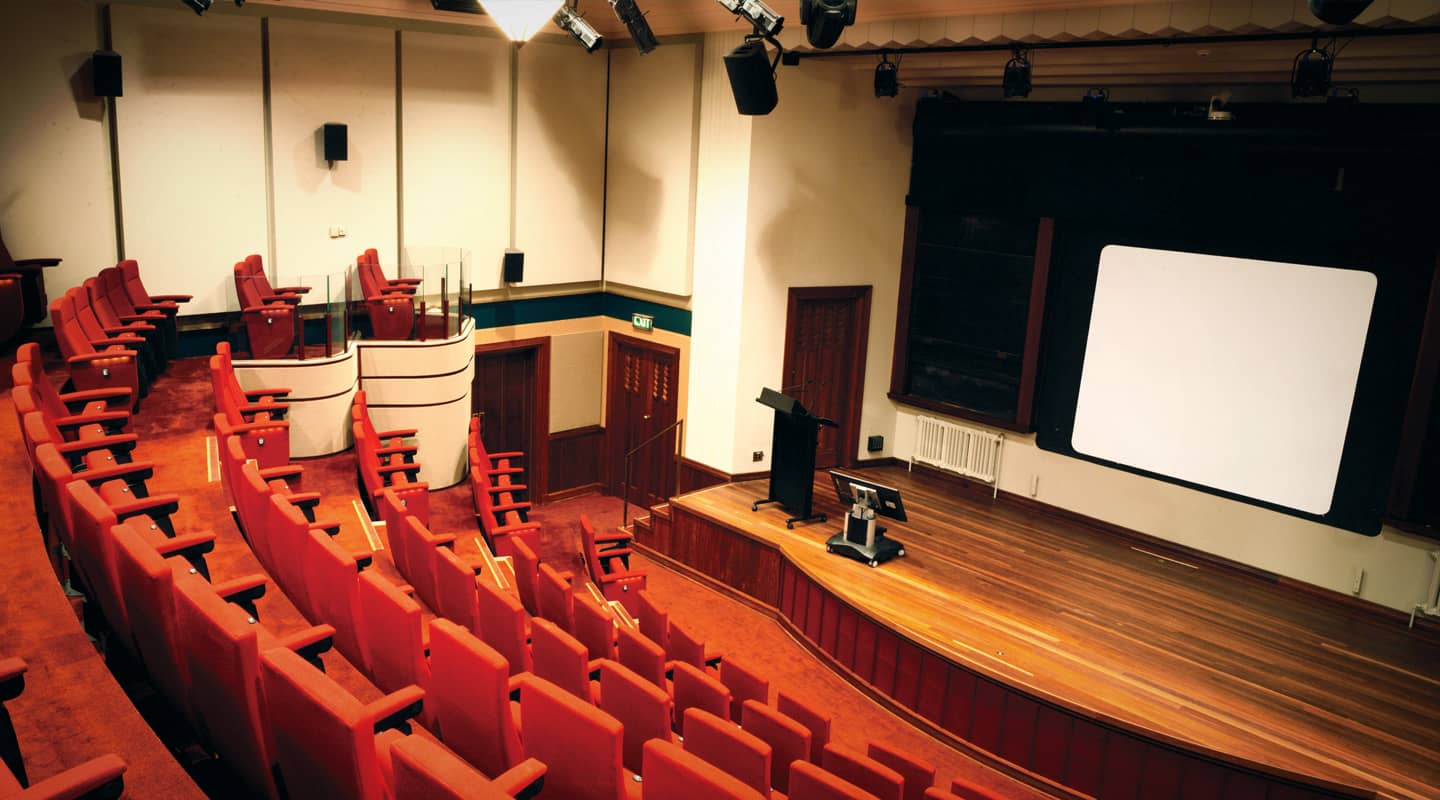
Updating The Archives
The National Film & Sound Archive, Australia hosts 30,000 school kids a year. Now, after a $2m upgrade to the NFSA’s theatrette, they’re finally paying attention.
Text and Images:/ Mark Davie
It’s just a little embarrassing when every presentation in the theatrette at the nation’s central repository of cinema and television history begins with the screensaver featuring the logo of the DVD player’s manufacturer. “We used to look like we were sponsored by Pioneer!” laughs Technical Support Manager, Trevor Anderson at Australia’s National Film and Sound Archive (NFSA) in Canberra. “We used to buy the cheapest DVD players because they lasted just as long as the expensive ones, but you couldn’t turn the bloody logos off on the cheap ones.”
It wasn’t an entirely dire situation. After all, the problem was confined to NFSA’s theatrette, as the main cinema had been upgraded years ago. Still, the theatrette was used mostly for educational presentations, where the NFSA was trying to give 30,000 kids a year a taste for Australian media history. And trying to enthuse kids about the history of film and sound with a DVD player, an ageing projector and a couple of props was somewhat limiting, considering the breadth of content on offer behind the scenes.
THE VIEW FROM UP HIGH
Recently, the NFSA put the finishing touches on a $2m top-to-bottom renovation of the theatrette. It used to be an entirely flat-floor venue with a central aisle that occupied the best seats in the house. Despite the flat floor, the bio box was still in the standard cinema projection position, ie., high up the back wall. Most of the material screened in the theatrette’s early days was on film, so the screen was tilted back to compensate for the inability to correct for heavy keystoning. So not only were visitors staring at the back of each other’s heads, they were watching footage on a screen tilted back away from them – a disastrous viewing experience.
These days, apart from the heritage-protected decor, you’d hardly recognise the place. The theatrette now seats 114 in a tiered layout without a central aisle, and no obscured-viewing seating positions. Even the glass safety barriers in front of the side seating boxes on the balcony were re-specified as flat panes so they no longer warp the view of the audience.
It took a lot of engineering to comply with the heritage classifications, and eventually the builders, Icon, installed massive amounts of steel, pinning it to the walls of the level below to take the load of the new structure and get the 1932 building up to code. Not that you’d be able to tell, the original black board is still on the back wall from its days as the Institute of Anatomy.
Despite a major refurbishment and technical upgrade, the former anatomy lecture theatre retains its heritage feel, right down to the steam radiators and the original angled film projection screen.
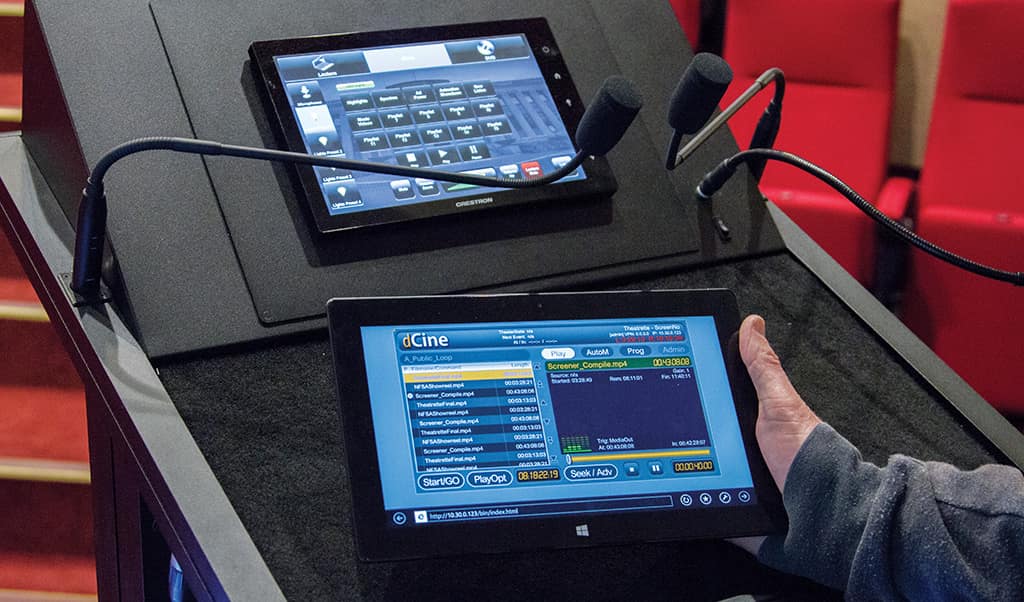
GOING SOFT ON THE ACOUSTICS
The acoustics were a big job, not much had ever been done with them when the NFSA took over occupancy of the building. Peter Griffiths of Acoustic Studio took on the task, and one of the main criteria was to hit a noise floor benchmark of 32dB SPL. They ended up at 28dB, which – though not studio-level quiet – is really good for a room dedicated to critical, yet enjoyable listening.
The stage, while it looks original, has actually been extended further into the auditorium to allow the NFSA to stage cultural events in the theatrette. After all, it’s not just an archive for film, but sound too. Being one of Canberra’s most iconic buildings, its unique heritage detailing and seating plan that curved into the stage makes it an attractive performance space. Since the restoration, it’s already hosted acts like Gotye, hip-hop artist Urthboy, the Stiff Gins, and an experimental surround sound performance. The low noise-floor, and natural amphitheatre-like acoustic allows acts to perform un-amplified if they choose.
“You can have someone playing a cello live on stage without amplifying it, and everybody in the room will hear it perfectly,” remarked Anderson. “Urthboy walked on stage and tossed out a throwaway line – then someone in the audience answered him. It’s a very intimate experience in here.” It’s also eliminated the need for educational presenters to rely on a mic, even with a room full of 12-year olds.
PLENTY OF D&BS
If the need for amplification arises, there’s another side of the venue that can be unleashed. To cope with the cinema playback, a d&b Audiotechnik 7.1 surround system was installed, using xS series speakers, including the 12S-D model for LCR (left, centre and right) positions, 8S for side surrounds, the in-between 10S model for rear surrounds, and a couple of 18-inch subs to handle the low end. The decision not to go with traditional cinema speakers was so the surround system could be used for more experimental audio performances without the risk of blowing anything up.
As well as the surround sound system, the subs can revert to being time-aligned with a pair of d&b E12 coaxial loudspeakers hung at the front of the stage for a more traditional left/right PA setup.
“We chose the E12s because they sound better for speech,” said Mark Chatburn from Wizard Projects (recently acquired by Videopro), who installed the system. Originally the plan was to have two boxes a side, but “the NFSA wanted to bring the image of the sound down at the front, rather than it going over your head. So there are four d&b xS-5s speakers in the stage to get the complete room coverage.”
Everthing runs through a Yamaha CL3 digital console up in the bio box, where engineer Dan Lualdi can either mix through JBL LSR2325 powered studio monitors, or he can undock his iPad and mix out in the auditorium. “It gives him control over most of the functionality of the desk in the room,” said Anderson. “Or if we had a massive show to do in there we could take the desk into the room as well.” The flexibility to move the desk around at will is because it connects via Dante networking into the 32-in/16-out RiO digital cores under the stage, requiring only a couple of Ethernet ports to be dotted around the venue at key hookup points.
ALL IN THE DIGITAL DOMAIN
“We went with a Dante system so we could pick and choose what was on the network, and what went where – it’s so flexible,” said Chatburn. “There are two Yamaha DME64N processors sitting in the rack that have all the audio going through them, the dCine server, the Blu-Ray, the Dolby side – a lot of inputs. Then we’ve got the Crestron control sitting over the top of that. So as well as standard control, you can also output up to 12 sends of speakers from the CL3 so you can mix however you want. We also wired it all with dual-redundant networks, which is common to Dante, so if someone pulls the primary network, it automatically fails over to the secondary.”
There are now three networks strung around the theatrette; one running the house network, one running Dante, and one running the Crestron AV control. Wizard installed the last two networks, not because they wouldn’t run over the existing infrastructure, but because they couldn’t be sure it would be foolproof.
“Crestron systems are all HDBaseT, so we ran in all R&M shielded Cat 6 cabling from Madison Technologies because it’s probably the best stuff you can get,” explained Chatburn. “You can’t cut corners.” Likewise, there were no corners cut when it came to the accuracy of the sound system. Chatburn: “We used Belden high quality cabling. All of the wiring goes back to the rack, so even if two speakers are paralleled, they’re paralleled on a terminal strip at the back of the rack.”
Lualdi has a collection of Sennheiser G3 handheld and lapel systems to work with, as well as a few DPA d:fine headset mics when required, and Audio-Technica goosenecks for the lecturn.
“On the stage, there’s a really nice, live, natural sound because of the kind of shape of the stage and the surfaces,” said Anderson. “And because it’s such an intimate room designed to be very dead back up in the rear, Dan often just lifts the sound a little bit and adds a bit of reverb.”
As for what Lualdi thinks of the CL3, “It doesn’t have that inherent digital sound to the preamps. It’s not an LS9; it sounds amazing compared to that platform.”
PROJECTING THE RIGHT IMAGE
The main projector in the bio box is a 1080P three-chip DLP Panasonic PTDW 10k, which had been the projector in the main cinema until it got upgraded to a 4K-capable Barco machine. “We’re running the Panasonic with all four lamps at the moment because we want to be able to have a fair amount of light in the room and still get an image on screen,” said Anderson.
The screen is now a 16:9 Electricinema XL motorised screen. At 250 inches, it takes up a large part of the wall, but it’s perforated to let sound travel through the screen from the d&b system behind.
Serving the footage to the projection system is a Digitall d-Cine X-21 media store, a server built in Melbourne that has eliminated the need for presenters to mess around with multiple formats day-to-day. “It’ll take MP4, MPEG2, all that sort of material at high bit rates,” says Anderson. There are government regulations about having access to networks in public places that the crew has to abide by. So, if they want to add something new to the server from the archive, it’s a manual process of uploading it via USB sticks.

UNDER CONTROL
The room is comprehensively controlled by a Crestron control system. A touchscreen control unit sits in the Lectrum lectern, and a Windows tablet lets presenters roam around the room while running their presentation through a touch version of dCine. The server has an interface to the lighting system, so when a presenter triggers a clip, the lighting dims, and when the clip finishes, the lighting automatically returns. “Wizard was just phenomenal,” said Anderson. “The programming of the Crestron unit is absolutely amazing. You can control basically every detail of the room just from the control surface.”
All the vision passes through a packed Crestron DM-MD32x32 digital media switcher, including a Wolf Vision Desktop Visualiser for showing off props and documents on the big screen. There’s also AJA HDMI to SDI converters, and a WellAV SD/HD streaming encoder allowing the staff full control over where they want vision to go and in what format.
Events can be broadcast live using the three remote-controllable Panasonic PTZ cameras installed in the venue and a Panasonic video switcher that can switch the live video as well as any feed from the Crestron media switcher. For the moment, the NFSA uses the theatrette to hold staff meetings, using Cisco’s C90 video-conferencing codec to beam vision from the three cameras to the NSFA’s other sites in Sydney, Melbourne and their storage facility in Mitchell. But there are big plans in the works for turning the theatrette into the NSFA’s link to the outside world.
“We plan to run educational programs out to schools from here,” said Anderson. “There’ll be somebody in the bio box operating the vision switcher, a presenter doing their presentation and a group in the room. We can go out to three schools at a time, or hire a bridge and go out to as many as the bridge will sustain.”
As well as the PTZ cameras, other NFSA staffers can bring in one of the many video cameras on hand. On the end of the chain is a four-channel Editshare Geevs HDP server that can record synced high-resolution video for later editing, and importantly, archiving any significant shows.
LED’ING THE WAY
The devil is in the details, says Anderson. You can’t have a great projection on a massive screen, with immersive sound, and then have emergency lights and flashing LED indicators in your eyes. He has nothing against LEDs, just in the right place at the right time. In fact, the install is one of the first fully LED theatres in the country. “There’s a general desire to save power throughout the Commonwealth agencies,” said Anderson. “We thought we should do a theatrical rig in the same manner. The cost to have a winch system for the lighting rig is saved by the fact we only have to access the lights once every 10,000 hours to address failures, which will be years and years away. As opposed to a normal theatrical rig, where you’d be up there every week re-gelling and changing lamps.”
The original heritage architectural fixtures also had their internals replaced with LED sources, all dimmable to zero. All the lighting, including both the house light and the stage fixtures, are controlled by the ETC Smartfade ML lighting console via a Jands DD8 DMX512 distro while house lighting is via ETC’s Paradigm Architectural control system. There are 4 x Vari-lite VLX Wash moving heads, 14 x ETC RGB Source Fours, 10 x ETC Desire D40 RGB washes, and four ETC Selador LE Lustr LED bars washing the walls.
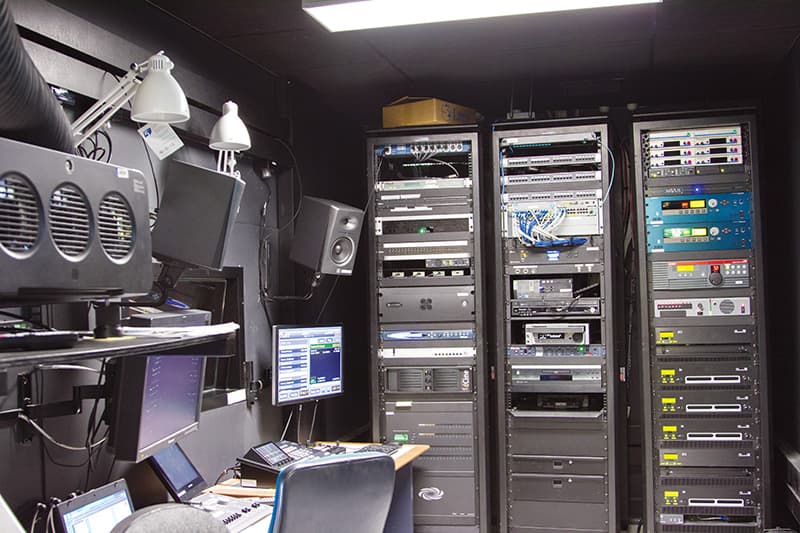
A BRIEF HISTORY
Anderson had only been at the NFSA three years when he undertook the heavy-lifting task of renovating the main cinema and writing the brief for the theatrette. Anderson: “It lay around for a number of years while the old system just got worse and worse. And I just kept saying, ‘let’s bite the bullet and build this place.’ The most successful program we run all year is the schools education program and so it deserved a venue which matched the number of people we presented to.
“It certainly didn’t before this. The projector was only a 1500 ANSI lumen device that you couldn’t run with any kind of light on in the room – otherwise there would be no contrast. We were running out of DVD players with a VGA output to feed the projector; the sound system had been in here for many, many years; the screen was old and yellowed; and the flat floor didn’t work for anybody or anything – it was just a mess, the whole place.”
It’s a dream come true for Anderson. After pressing for so long, he finally got all the tech he was after, resulting in a multi-functional space that has expanded the capabilities of the NFSA dramatically. There would be one addition he’d love to have though. While he’s happy with the quality of the Panasonic projector, he’d love to have a 2K DCI digital cinema projector alongside it to allow the NFSA to run the theatrette as a secondary cinema and have a films run for longer than the current single screen program allows. Unfortunately, “you can’t run DCI-packaged films on a video projector,” said Anderson. “It’s a proprietary system for exhibition of film. So it locks you out of anything other than that.”
With the immediate change in acoustic, the comfortable seating, the upgrade to the visuals and sound, the flexibility of sources, and the ability to draw in new shows, the theatrette renovation is undoubtedly a success. But the real test is when it comes to the bread-and-butter educational presentations. For presenters like Jeremy, who had an uphill battle with a room full of kids before the renovation, he says the game’s been changed dramatically. No more futzing around with discs not loading and dodgy remotes, or a screen the kids could barely see. “It’s a totally different experience conducting a presentation,” he said. “The kids are more engaged because they don’t have the distraction of looking at the kid in front of them and poking them in the back of the head. And they’re seeing the entire presentation, in hi-def, and hearing it in fabulous quality. They actually pay attention to you.”
MORE INFORMATION:
Systems Integrator: Wizard Projects (now a subsidiary of Videopro) – videopro.com.au
Electroacoustics: Acoustic Studio – acousticstudio.com.au
Yamaha: au.yamaha.com
National Audio Systems (d&b audiotechnik): nationalaudio.com.au
Madison Technologies (cabling): madisontech.com.au
Crestron: crestron.com
Digitall (dCine): digitall.net.au
Jands (ETC, LED lighting, ClearCom): jands.com.au
Panasonic: panasonic.com
Cisco (videoconferencing): cisco.com
Lectrum: (lectern): lectrum.com.au
Sennheiser: (wireless mics): en-au.sennheiser.com
Amber Technology (DPA): ambertech.com.au
Technical Audio Group (Audio-Technica): tag.com.au


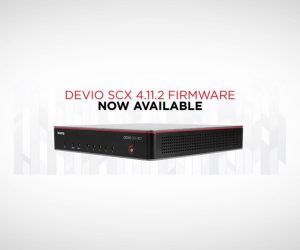


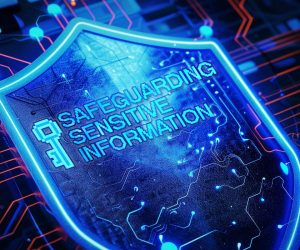
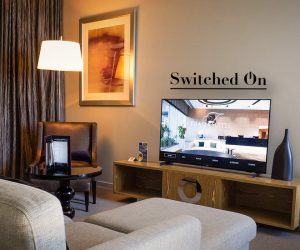




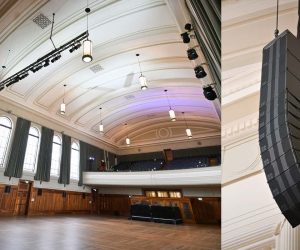



RESPONSES